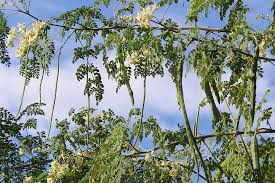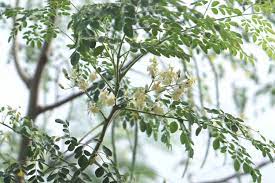Moringa branches refer to the branches of the Moringa tree (Moringa oleifera), which is a versatile and nutrient-rich plant known for its various medicinal, nutritional, and agricultural benefits. The Moringa tree is native to South Asia but is now grown in many tropical and subtropical regions around the world due to its numerous uses and benefits.
The branches of the Moringa tree contain leaves, flowers, and pods (drumsticks). These parts of the tree are highly nutritious and are often used in traditional medicine, food, and dietary supplements. Here’s a breakdown of the different components of Moringa branches:Moringa leaves are a rich source of vitamins, minerals, and antioxidants. They are often consumed fresh, cooked, or dried and ground into a powder to make nutritional supplements. Moringa leaves are known for their high levels of vitamin C, vitamin A, calcium, iron, and protein.
Moringa flowers are edible and often used in salads, soups, or stir-fried dishes. They have a mild flavor and are also used to make tea. Moringa flowers contain essential amino acids and are rich in vitamins and minerals. The long, slender pods of the Moringa tree are commonly known as drumsticks. They are used in various cuisines and are particularly popular in South Asian dishes. Drumsticks are a good source of vitamins, minerals, and fiber.
The branches of the Moringa tree, including leaves, flowers, and drumsticks, are important for their nutritional value and potential health benefits. They are often used to address malnutrition, boost immune systems, and provide support for various health conditions. It’s essential to ensure proper harvesting and utilization of Moringa branches to maximize their benefits while promoting sustainable and responsible cultivation practices.
The Economic Importance and Uses of Moringa Branches

Moringa, a versatile and fast-growing tree, is renowned for its numerous economic and practical uses. Its branches, along with other parts of the tree, have several economic and commercial applications:
1. Livestock Feed: Moringa branches are a valuable source of nutrition for livestock, including cattle, goats, and poultry. The leaves and young branches are rich in protein, vitamins, and minerals, making them an excellent supplementary feed.
2. Fertilizer and Soil Conditioning: Moringa branches and leaves can be used as green manure or incorporated into compost, enhancing soil fertility and structure. Their nutrient-rich composition improves soil health and aids in the growth of various crops.
3. Mulch Production: Dried and shredded Moringa branches can be used to create mulch, which helps retain soil moisture, suppress weed growth, and regulate soil temperature. This contributes to healthier crop growth and improved agricultural yields.
4. Biogas Production: Moringa branches can be used as feedstock for biogas production through anaerobic digestion. This process yields biogas, a renewable energy source that can be utilized for cooking, heating, or generating electricity.
5. Wood and Timber Alternatives: While not as dense as traditional timber, mature Moringa branches can be used as a source of wood for small-scale applications such as crafting, making household items, or as fuelwood. It offers a renewable and sustainable alternative to depleting natural wood resources.
6. Craftsmanship and Artisans: Moringa branches can be utilized by artisans and craftsmen to create various handicrafts, sculptures, and functional items. The branches can be shaped, carved, and combined to produce a wide array of products, contributing to local artistry and income generation.
7. Erosion Control and Land Rehabilitation: Planting Moringa trees, including their branches, aids in erosion control and soil stabilization. The extensive root system helps prevent soil erosion in vulnerable areas, such as slopes and degraded lands, supporting land rehabilitation efforts.
8. Local Fuel Source: In areas where access to traditional fuels like gas or electricity is limited, dried Moringa branches can serve as a source of fuel for cooking and heating. This reduces the dependence on non-renewable energy sources.
9. Medicinal and Therapeutic Uses: While not directly related to economic use, Moringa branches, leaves, and other parts of the tree are known for their medicinal properties. Extracts from the branches are used in traditional medicine for various purposes, including treating inflammation, pain relief, and wound healing.
Read Also: Moringa Seeds: Economic Importance, Uses, and By-Products
10. Sustainable Agroforestry and Silviculture: Moringa branches play a crucial role in sustainable agroforestry and silviculture practices. The tree’s ability to regenerate quickly and provide various benefits makes it an essential component of integrated farming systems.
The Products and By-products That Can Be Derived From Moringa Branches
Moringa (Moringa oleifera) is a versatile plant that offers various products and by-products derived from its branches.
Here is a list and explanation of some of the products and by-products that can be obtained from Moringa branches:
1. Moringa Branches for Firewood and Charcoal: Moringa branches can be used as a source of firewood for cooking and heating purposes. They can also be converted into charcoal, which is a valuable fuel source.
2. Mulch and Compost: Moringa branches can be chipped or shredded to create mulch, which is used to cover the soil surface, retain moisture, suppress weeds, and improve soil health. They can also be used to make compost, enhancing soil fertility and structure.
3. Animal Fodder: Moringa branches and leaves are rich in nutrients and can be used as animal fodder for livestock, providing essential vitamins, minerals, and proteins.
4. Basketry and Crafts: The flexible and durable nature of Moringa branches makes them suitable for weaving baskets and creating various crafts. Artisans often use the branches to make items like baskets, mats, and decorative pieces.
5. Natural Fencing and Trellises: Moringa branches can be utilized for constructing fences and trellises in agricultural settings, providing support for climbing plants and protecting crops.
6. Erosion Control and Soil Stabilization: Moringa branches can be utilized to control erosion and stabilize soil on slopes and vulnerable areas, preventing soil degradation and promoting vegetation growth.
7. Moringa Leaf Powder Production: While not directly from branches, the leaves of the Moringa tree can be harvested and ground into a fine powder. This Moringa leaf powder is rich in nutrients, including vitamins, minerals, and protein, making it a popular dietary supplement.
8. Biofuel and Energy Production: Moringa branches can be converted into biofuels such as biogas, biodiesel, or ethanol, contributing to renewable energy production and reducing dependence on fossil fuels.
9. Herbal Medicine: In traditional medicine, various parts of the Moringa tree, including branches, are used to prepare herbal remedies for a variety of ailments. These remedies can be in the form of infusions, poultices, or decoctions.
10. Tannin Extraction: Moringa branches contain tannins, which can be extracted and used in the tanning industry for processing leather.
11. Moringa Bark for Medicinal Purposes: The bark of Moringa branches may be used in traditional medicine for its potential medicinal properties, although caution should be exercised as excessive bark harvesting can harm the tree.
12. Biochar Production: Moringa branches can be converted into biochar, a type of charcoal-like substance used to improve soil fertility and sequester carbon in the soil.
In conclusion, utilizing Moringa branches for various purposes not only maximizes the usage of the tree but also promotes sustainability, environmental conservation, and economic development.
Read Also: All You Need to Know About Cosmos Flower

